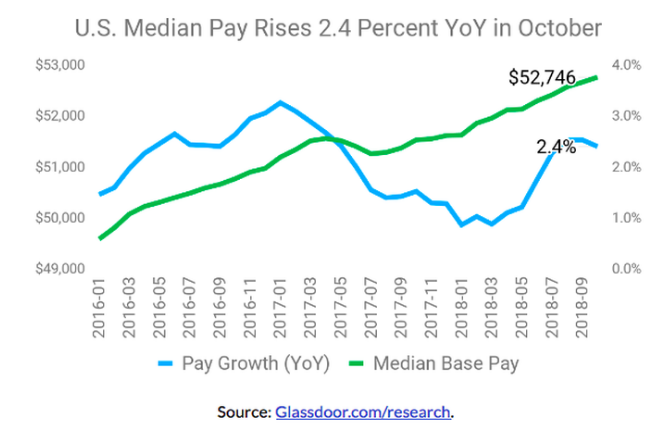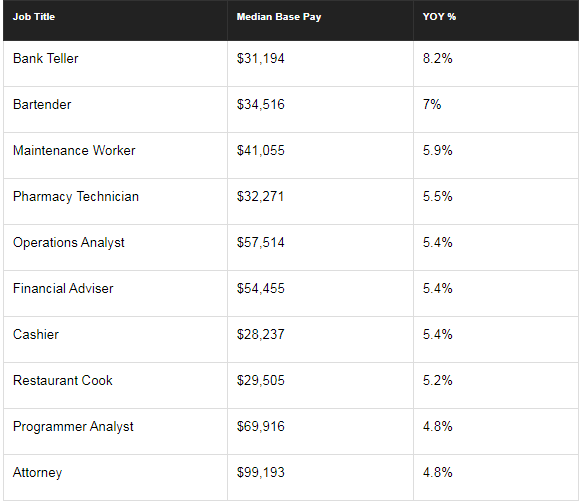Wages Keep Growing For American Workers

Median base pay for full-time workers in the United States has risen by at least 2% in each of the past four months, according to the latest edition of the Glassdoor Local Pay Reports. Wages increased by 2.4% year over year in October to $52,746 per year.
This article originally appeared in the Motley Fool.
That's a slight drop from the 2.5% increase in September, but it's still a strong number. Pay has been steadily rising for full-time workers since January 2016, driven at least in part by a shortage of available workers.
"It's far too soon to draw any conclusions about shifts in long-term trends as the dip is likely attributable to normal monthly fluctuation or short-term disruptions like Hurricane Michael," wrote Glassdoor's Daniel Zhao. "Either way, the overall trend of sustained pay growth still indicates a tight labor market that's driving up wages for many American workers."

These are the jobs with the highest wage growth
Six of the jobs that make the list fall well below the median wage. It's very likely that the increases for fields like bank teller and bartender are due to a shortage of workers forcing companies to pay more. That's almost certainly the case when it comes to cashiers, as there is both a seasonal demand and not enough workers to fill all the available open jobs.

Programmer analysts and operations analysts saw wages rise at twice the national average. That's due to "the proliferation of data collection and businesses' increasing reliance on data-driven insights" creating "significant demand for workers with programming and data skills." That's likely to continue as technology makes it easier for analysts to do work that once required a higher level of expertise.
"The manufacturing industry remains relatively strong with steady wage growth and job gains," Zhao wrote. "Workers such as material handlers and production managers have seen wages grow well above inflation at 17.9% and 10.7%, respectively since May 2015."
In some cases, at the lower end of the pay scale, wage growth has been assisted by minimum wage increases. That could continue in 2019, as multiple states have minimum wage increase measures on the ballot in the upcoming midterm elections.
Steady, but cautious
Wages have been trending up, but automation stands as a possible headwind against that continuing. Major retailers including Walmart have been automating some backend functions and are allowing more checkout via app. McDonald's has been another leader when it comes to automation, though the chain's efforts to offer ordering via app and kiosk have so far not led to job loss. These types of technology could eliminate some jobs, though they may also create some customer service positions.
For companies, it becomes a question of when the cost of employees, or the lack of available ones, makes the up-front cost of automating make sense. That point may be close for very large businesses, but it's not here yet in a way that will affect most workers.
Daniel B. Kline has no position in any of the stocks mentioned. The Motley Fool has no position in any of the stocks mentioned. The Motley Fool has a disclosure policy.





















